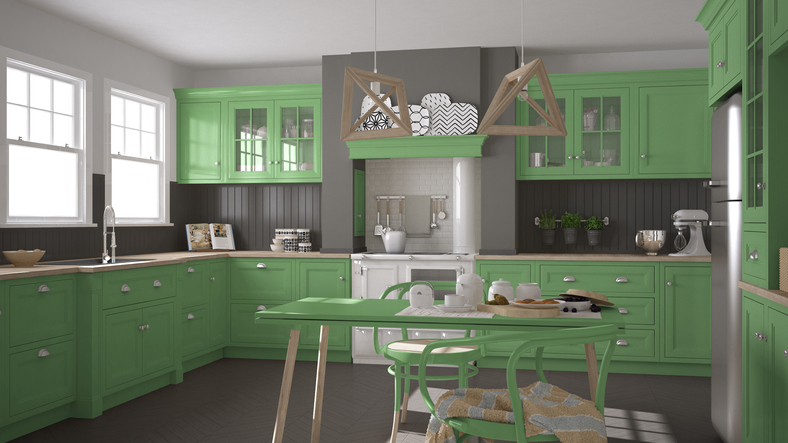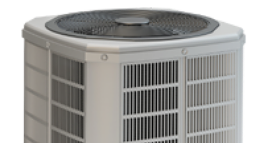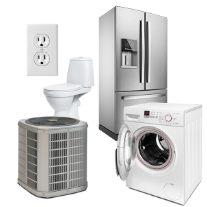You know that smart devices can help reduce energy consumption, but what else can you do if you’re looking to live a greener lifestyle? If you’re interested in making your kitchen more eco-friendly, here are some tips for transforming your kitchen into a more efficient, comfortable space with a smaller carbon footprint.
Avoid VOCs
Volatile Organic Compounds (VOCs) release potentially harmful chemicals into the air at room temperatures. Breathing VOCs can cause short-term illnesses like headaches and nausea. Long-term, constant exposure has caused cancer and damage to the liver, kidneys, and nervous system of laboratory animals. Some of the most common sources of VOCs in the kitchen include:
- Paints
- Cleaners and room deodorizers
- New cabinets
- New wood floors
So, if you plan to paint your kitchen, install new cabinets or floors, or use air fresheners, check that they’re low VOC or VOC-free. It’s good not only for the environment but also your health.
Reuse, Reduce, and Recycle
In addition to recycle items like cardboard, paper, metals, and plastic, you can repurpose older items. For example, you could explore suppliers in your area to find used doors, plumbing, stone countertops, hardware, and cabinetry. Recycled stone-chipped composite countertops have become a popular option for kitchens because they look like granite and are almost as durable.
Use Bamboo

Bamboo has become a popular building material for eco-friendly kitchens. You can use it to make handsome cutting boards, flooring, and backsplashes. You can also purchase bamboo bowls, forks, and spoons. However, bamboo can be a little pricier than materials like plastic.
Cork is also a good renewable resource that’s hypoallergenic, sound-absorbing, and resistant to mold and mildew.
Use LED Lighting
LED lights are a great eco-friendly choice for several reasons. First, they use up to 75% less energy than incandescent bulbs.
Second, they can last up to 25 times longer than incandescent bulbs.
Third, they give off extremely low amounts of heat, which can contribute to keeping the house cooler in the summertime.
All of these aspects make LED lights an excellent way to conserve energy in the kitchen.
Install a Refrigerator With a Top-Mount Freezer
If eco-friendliness is most important to you, consider a refrigerator with a top-mount freezer. According to Constellation Energy, “a top-mount freezer refrigerator that has earned ENERGY STAR® certification uses less energy than a 60-watt light bulb.”
As a bonus, when you purchase a Home Service Plan (home warranty) from 2-10 Home Buyers Warranty (2-10 HBW), you can access our Appliance Discount Program, which can help you save big on name-brand appliances.
Purchase Energy Star Appliances
Speaking of Energy Star, look for appliances that have been approved by the Environmental Protection Agency’s (EPA) Energy Star program. These appliances use 10% to 50% less water and energy than standard models. Your eco-friendly kitchen should also be equipped with thermally efficient doors and windows.
Choose Natural Fabrics

Since man-made fabrics may include chemicals that can harm the environment, it’s best to avoid them if possible. Choose wool or cotton for your window dressing, dining chairs, and table cloths whenever possible.
Use Fans for Temperature Control
Install a ceiling fan if possible to keep your kitchen cool in the summer without the need for constant air conditioning. Make sure your fan spins counterclockwise in the summer!
In the winter, flip the fan in reverse to force warm air downward and reduce heating costs.
Shop Local
Even the greenest remodeling materials require countless gallons of fuel to ship across oceans or deliver from out of state. If possible, purchase from local vendors, who can provide you with the materials you need without taking as big a toll on the environment.
Clean Greener
Instead of using synthetic chemicals to keep your kitchen clean, use natural substances. Scour cast-iron pans with salt, and clean surfaces with lemon juice, club soda, baking soda or white vinegar.
Check out our article for more tips on how to make green cleaning products at home (without surprising or dangerous chemical reactions!).
Bonus Tip: Purchase or Renew Your 2-10 HBW Home Service Plan

Going green is a personal choice that could help you save money and reduce your carbon footprint. But regardless of whether you want to take steps to be more eco-friendly, one thing that all homeowners will likely go through is an unexpected breakdown to an important system or appliance. That’s where a 2-10 HBW Home Service Plan can come in handy.









